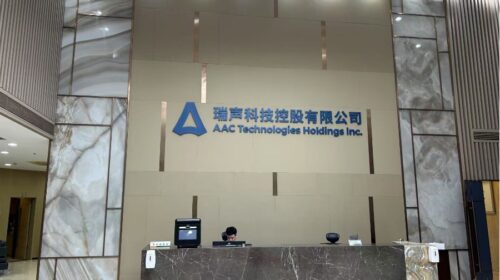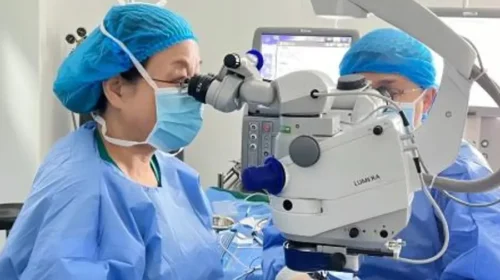Q Tech needs better R&D focus to go eye-to-eye with sharper optic rival

The camera module maker recorded solid growth in the first half of 2024 on a rebounding smartphone market, but still lags Sunny Optical in terms of product development
Key Takeaways:
- Q Tech’s first-half revenue rose 40% to 7.68 billion yuan, while its profit jumped 454% to 115 million yuan
- The company’s R&D spending accounted for only 3.7% of revenue for the period, well behind as much as 7% spent by rival Sunny Optical in recent years
By Ken Lo
A rebounding smartphone market is shining a spotlight on warming revenue and profits for makers of the lenses and camera modules that are central components of most models. First industry leader Sunny Optical (2382.HK) released a positive profit alert late last month, and now rival Q Technology (Group) Co., Ltd. (1478.HK) has also released a glowing report for the first half of the year. That includes 40% revenue growth to 7.68 billion yuan ($1.07 billion) for the six-month period, and a more than fivefold profit increase to 115 million yuan.
Q Tech’s latest results show its unit sales volume rose 30.8% year-on-year in the first half of 2024, partly fueled by growing sales for camera modules used in automotive and IoT applications. Equally important, the company logged a 1.8 percentage point gain to 5.2% in gross margin for its core optical lenses and camera modules that account for 95% of revenues, facilitating the big profit jump. It attributed the strong performance to a rebounding global smartphone market, which allowed it to use more of its capacity. It also credited a growing portion of its sales going to higher-end products that typically carry fatter margins.
Q Tech and Sunny Optical are major rivals in their space, making the lenses, camera modules and other optical components that power not only smartphones, but also digital cameras, closed-circuit TV cameras and other consumer electronics. Q Tech also makes fingerprint-recognition modules, though that part of the business accounts for just 5.2% of its revenue.
Their major overlap means the pair often serve the same customers, with both providing lenses for smartphone producers including Apple, Samsung, Oppo, Vivo and Xiaomi. That explains why the two resemble each other not only in terms of products, but also in revenue and profit trends. Reflecting that parallel, when Q Tech’s net profit fell 52% in 2023, Sunny Optical’s also declined 54% over the same time.
Q Tech says it has been actively targeting the high end of the market by boosting its product offerings there, reflected by the 49.2% of its sales that go to camera modules offering resolution of 32 megapixels and higher. The growing proportion of high-end product sales has added to the company’s reputation as a leader in its space, while also boosting its profit margins. But Q Tech is still a few steps behind Sunny Optical, whose edge at the higher end of the market is reflected in its higher R&D spending and better gross margins.
R&D spending gap
In the first half of this year, Q Tech spent just 286 million yuan on R&D, equating to 3.7% of its 7.68 billion yuan in total revenue. Sunny Optical spent far more heavily, doling out 2.57 billion yuan on R&D from its 31.7 billion yuan in revenue, equating to a ratio of 8.1% of the total. On a broader basis, Sunny Optical’s R&D spending has averaged around 7% of its total revenue in recent years, double that of Q Tech.
Sunny’s heavier emphasis on product development also shows up in the two companies’ differing margins. Q Tech recorded a net margin of 1.5% and gross margin of 5.2% in the first half of 2024, well behind Sunny Optical’s 3.6% net margin and 14.5% gross margin last year. That appears to show the big gap in R&D spills directly into each company’s ability to negotiate better prices with its clients.
In addition to its first-half results, Q Tech has also announced monthly data that show it sold about 33.43 million mobile phone camera modules in July, up 1.5% month-on-month and 5.5%, year-on-year, reflecting the ongoing recovery in the Android smartphone market. Its smartphone camera module sales also performed well in the first seven months, totaling 248.6 million units, or a monthly average of 35.51 million units sold. But here we should also point out that June and July sales trailed that average at about 32 million units.
The company said its customers have begun more aggressively upgrading their product specifications as the market recovers, aiming to address diverse requirements such as low-light photography, long-distance shooting, video recording and wide-angle, macro and shake-resistant photography. At the same time, phone manufacturers have been offering more models with high-end features such as periscope cameras, high-magnification optical image stabilization, variable apertures, and large-size ultra-high-pixel sensors. All of that is further challenging companies like Q Tech and Sunny Optical to push the limits of their optical products.
While they still represent a relatively small portion of Q Tech’s total, fingerprint recognition module sales in July also maintained strong growth momentum with 14.04 million units sold, up 8.3% month-on-month and 58% year-on-year. The latest monthly figures for that category were also well above the average monthly total of 10.45 million units in the first seven months of the year. In addition, demand for smartphones equipped with ultrasonic and optical fingerprint recognition modules has been steadily rising, further benefiting companies like Q Tech whose products can meet that demand, according to its interim results,
A number of brokerages are bullish on Q Tech given the broader boom in smartphone sales, along with demand from IoT, automotive and extended reality (XR) applications, believing such trends will help the companies keep posting big sales gains. BOCI recently upgraded its rating on Q Tech to “buy” and raised its price target to HK$5.70 from a previous HK$3.60, representing 23% upside from the stock’s current price.
Q Tech may consider itself an equal with Sunny Optical, but it can only truly go eye-to-eye if it spends more heavily on product development. Otherwise, Sunny Optical could continue to lead at the higher end of the lens and module spectrums.
Sunny Optical’s better positioning is reflected in its greater attraction to shareholders, who may also like its ability to keep paying dividends over the last three years, even as Q Tech has suspended its dividend since 2020. The attraction gap is reflected in the two companies’ price-to-earnings (P/E) ratios. Q Tech’s forward P/E for 2024 currently stands at 15.3 times, much lower than Sunny’s 22.8 times.
To subscribe to Bamboo Works weekly free newsletter, click here






